Don’t know How to Grow Cloves? We’ve got you covered! Growing Cloves is super easy if you follow our quick and easy guide.
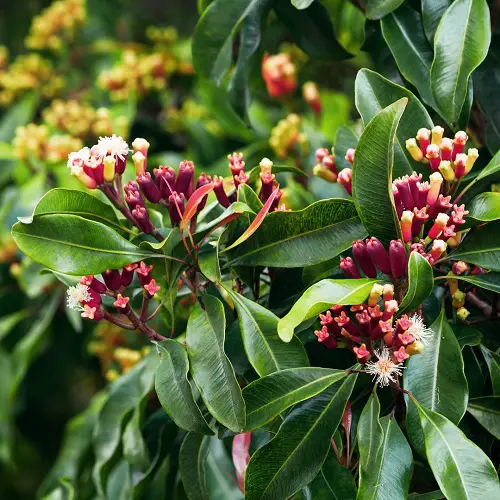
Discover the essential steps for growing cloves with our comprehensive guide on “How to Grow Cloves.” Here are the secrets to nurturing these aromatic spices and planting cloves in your garden, and enjoying a bountiful harvest of flavorful delights.
Clove Plant Information
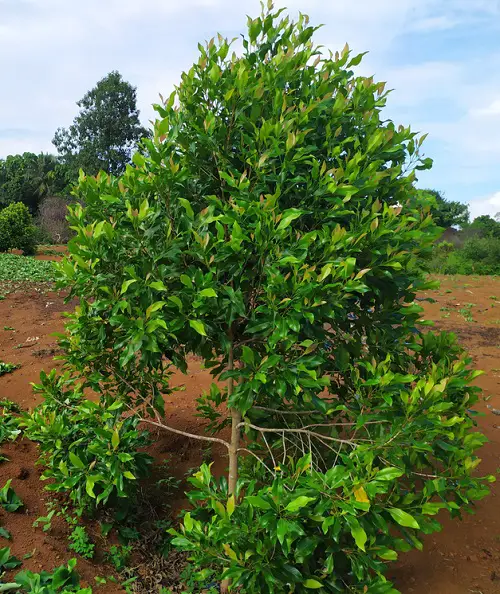
Origin
Initial Cultivation in Indonesia
The Moluccas Islands of Indonesia, often referred to as the “Spice Islands,” are considered the original home of the clove plant. For centuries, these islands were the world’s only source of cloves, making the spice a prized commodity.
Indonesia is the world’s leading producer of cloves, contributing a significant portion of the global supply. The country’s tropical climate and rich, volcanic soil create ideal conditions for cultivating this spice.
Trade Routes to India
Although not originally native to India, cloves were introduced to the Indian subcontinent through ancient maritime trade routes. They quickly became a staple in Indian cuisine and traditional medicine.
Taste
- Raw Taste: Raw cloves boast an intense, pungent flavor characterized by a warm and slightly numbing sensation on the palate, along with hints of sweetness and bitterness, making them a distinctive and potent spice.
- Cooked Taste: Once cooked, cloves undergo a transformation, imparting a more subtle and complex flavor profile. Their sharpness mellows, giving way to deep, earthy notes that harmonize with other ingredients, adding depth and warmth to both savory and sweet dishes.
Flowers
- Appearance: Clove flowers feature vibrant crimson buds clustered in compact, spherical shapes. The blossoms exhibit a delicate beauty, with slender petals unfolding to reveal a central cluster of stamens, creating a visually captivating garden spectacle.
- Blossom Time: Cloves typically bloom during the late summer to early fall months, showcasing their captivating flowers in response to favorable weather conditions. This brief yet enchanting period offers a burst of color and fragrance to gardens, marking the arrival of the harvest season for this cherished spice.
Fruit
- Shape and Size: Cloves are renowned for their distinctive nail-like shape, resembling small, slender spikes with curved ends. Their size ranges around 1 centimeter in length, making them easily recognizable and ideal for various culinary and medicinal uses.
- Color: The exterior of cloves boasts a deep reddish-brown hue, showcasing a rustic charm that hints at their intense flavor and aromatic properties. This rich color adds visual appeal when used as a garnish or ingredient in dishes.
- Interior of Clove Fruit: Within the clove fruit lies a central cylindrical structure known as the “clove bud.” This bud harbors the spice’s concentrated flavor, essential oils, and aromatic compounds, which are released when used in cooking or remedies.
Propagating Cloves

Ways to Propagate Cloves
- Seed Propagation
- Stem Cuttings
- Air Layering
- Grafting
The Most Popular and Reliable Method: Stem Cuttings
Don’t know how do cloves grow successfully? Stem Cuttings are considered the most reliable for propagating cloves. Stem cuttings offer a higher success rate due to the ability to control environmental conditions, ensure genetic consistency, and promote rapid root development, resulting in the establishment of healthy new clove plants.
How to Grow Cloves from Cuttings
- Select Healthy Stem: Choose a healthy, disease-free stem from an established clove plant that has several leaves and is not flowering.
- Prepare Cutting: Using a sharp, clean knife or scissors, take a 4-6 inch cutting with at least two sets of leaves. Remove any flowers or buds before planting cloves.
- Remove Lower Leaves: Trim or remove the lower set of leaves to create a bare stem that will be inserted into the growing medium.
- Dip in Rooting Hormone: Optionally, dip the cut end of the stem in a rooting hormone to encourage root development.
- Plant in Growing Medium: Insert the cut end of the stem into a well-draining growing medium, such as a mix of perlite and peat moss.
- Provide Humidity: Cover the cutting with a clear plastic dome or place it in a plastic bag to create a humid environment that promotes root growth.
- Monitor and Transplant: Place the cutting in a warm, bright location with indirect sunlight. Keep the growing medium consistently moist but not waterlogged.
Once roots develop in a few weeks, transplant the cutting into a larger container or garden bed.
Advantages of Stem Cuttings
- Genetic Consistency: Stem cuttings ensure that the new plant is genetically identical to the parent plant, preserving desired traits.
- Faster Growth: Cuttings already have a head start in growth compared to seeds, saving time and producing mature plants more quickly.
- Predictable Characteristics: Since cuttings come from established plants, their characteristics are known, making it easier to anticipate their growth, size, and quality.
- Bypassing Seed Stage: Growing from cuttings avoids the unpredictable variability and potential challenges associated with germinating clove seeds for planting.
Choosing a Container for Growing Cloves
When selecting a suitable container, several considerations contribute to the success of cultivating these aromatic plants.
Opt for a container that’s at least 12-16 inches in diameter and depth to accommodate the plant’s root system and allow room for healthy expansion.
Choosing a container made of durable materials like terracotta or plastic is advisable, as these materials provide proper insulation and moisture retention. Terracotta containers offer breathability and help prevent waterlogged soil, while plastic containers are lightweight and easy to move.
Plant Pot Sizes from Inches to Gallon
Requirements for Growing Cloves
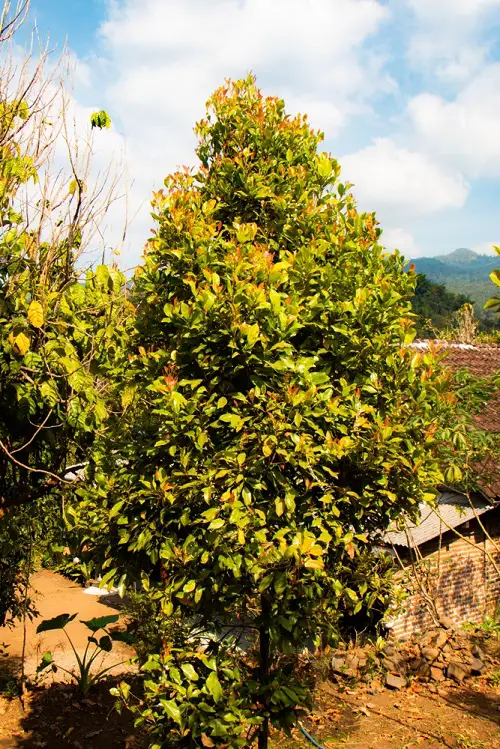
Sunlight
Clove trees are best suited for USDA Hardiness Zones 10-12. These zones offer a climate somewhat similar to the clove tree’s native tropical habitat.
In its natural habitat, the clove tree thrives in full sun but can also tolerate partial shade. Aim to provide at least 6 to 8 hours of direct sunlight for optimal growth.
Clove plants are somewhat susceptible to sunburn if exposed to harsh, direct sunlight for extended periods. It’s advisable to provide some afternoon shade if you live in a warm area.
Soil
Clove trees require well-draining soil to prevent root rot. Sandy loam to loam soils are generally recommended for optimum drainage.
The soil pH should ideally be between 6.0 and 7.0, which is slightly acidic to neutral. Testing the soil’s pH can guide any needed amendments.
High organic matter content is beneficial for clove trees. Organic matter improves soil structure, water-holding capacity, and nutrient supply.
If you plan to grow clove in pots, then go for this potting mix:
- Coir or peat moss: 40%
- Perlite or sand: 30%
- Compost or well-rotted manure: 30%
How to Make Your Own Potting Soil | Potting Mix Recipes For Everything
Water
Clove trees need consistent moisture, especially during their growing season. However, it’s crucial to avoid waterlogging the soil, as this can lead to root rot.
The best option is to keep a vigilant eye on the topsoil and water the plant whenever it feels dry to the touch. Do not water the plant on a daily basis.
- Symptoms of overwatering include yellow leaves, a lack of new growth, and root rot. If you notice these signs, reduce your watering frequency.
- Signs of underwatering include wilting, dry soil, and leaves turning brown at the tips. If you see these symptoms, increase your watering frequency.
Temperature ad Humidity
The optimal temperature range for growing clove trees is generally between 70°F (22°C) and 95°F (35°C).
Clove trees are native to tropical climates where humidity levels are generally high. The ideal relative humidity for clove cultivation is between 60% and 70%.
To increase humidity, gather organic matter like straw, leaves, or wood chips. Apply a 2-4 inch layer of mulch around the base of the clove tree, taking care not to let the mulch touch the trunk – this will create a humid microclimate around the clove tree.
Clove Tree Care

Fertilizer
Composted manure or bone meal are excellent choices for supplementing essential nutrients. You can also go for a balanced fertilizer with an N-P-K ratio of 14-14-14.
Young Trees (Up to 2 Years)
- Fertilize four times a year, once at the beginning of each season.
Mature Trees (2 Years and Older)
- Fertilize twice a year, once in the early spring and once in late summer.
Pruning
Regular pruning helps control the size of cloves plant, encourages new growth, and ensures proper air circulation. It’s best to prune your clove tree during the active growing season, which is typically spring and early summer.
Focus on removing dead or yellowing leaves, as well as any stems that are damaged or growing in undesirable directions.
To encourage bushier growth, pinch off the tips of young shoots. Additionally, if your clove tree becomes too tall or leggy, consider lightly pruning the top to promote lateral growth.
34 Best Dainty Flowers | Beautiful Tiny Flowers for Containers
Pests
- Aphids: Tiny insects that cluster on new growth, sucking sap and causing curling leaves.
- Spider Mites: Nearly invisible pests that create fine webbing and cause yellowing leaves.
- Mealybugs: Soft-bodied insects that appear as white, cottony masses in leaf axils.
- Scale Insects: Small, oval-shaped pests that attach to stems and leaves, draining sap.
- Whiteflies: Tiny, white insects that fly around when disturbed and weaken the plant by feeding on sap.
- Thrips: Slim insects that damage leaves by scraping and sucking out cell contents.
Diseases
- Anthracnose: This fungal disease causes dark lesions on leaves, leading to their premature drop.
- Powdery Mildew: White powdery spots on leaves indicate this fungal infection that weakens the plant.
- Root Rot: Overwatering can lead to root rot, causing wilting and yellowing of leaves.
- Leaf Spot: Circular lesions with dark centers and yellow halos are signs of this fungal disease.
- Clove Wilt: A bacterial infection causing wilting, yellowing, and eventual death of the plant.
Harvesting and Storing Clove
Maturing After Propagation
Clove trees typically take several years to mature and start producing cloves after propagation. It’s common for them to take around 5 to 7 years before reaching full maturity and producing a significant number of cloves.
Days to Harvest
Once the cloves plant has reached maturity, the process of harvesting cloves begins. On average, it can take anywhere from 150 to 180 days (5 to 6 months) after flowering for cloves to mature and be ready for harvesting. This usually occurs in the late summer to early autumn months.
Check out Beautiful Red and Black Flowers here
Signs the Fruit is Ready to be Picked
To determine if the cloves plant is ready for harvest, look for the following signs.
- The clove spice plant flower buds have turned a pinkish hue.
- The buds have swelled and are larger in size.
- They emit a strong, aromatic fragrance that indicates their readiness for picking.
- The clove spice plant buds should still be tightly closed, indicating that the cloves are fully formed within.
Storing Clove
Proper storage of harvested cloves is crucial to maintain their flavor and quality. Here’s how to store them.
- Drying: After harvesting, spread the cloves in a single layer in a well-ventilated, shaded area. Allow them to dry for about 1-2 weeks until they become dark and firm.
- Storage Containers: Once dried, transfer the cloves to an airtight container. Glass jars or metal tins work well. Make sure the container is clean and dry before adding the cloves.
- Dark and Cool: Store the containers in a cool, dark place, such as a pantry or cupboard. Avoid exposing the cloves to direct sunlight or temperature fluctuations.
- Labeling: To keep track of the storage time, consider labeling the container with the date of harvest.
- Checking Regularly: Periodically check the cloves for any signs of moisture or mold. If you notice any, remove the affected cloves to prevent it from spreading.
- Freezing: For longer storage, you can also freeze cloves. Place them in an airtight bag and remove as much air as possible before sealing. Frozen cloves can be used directly in cooking.
Benefits of Cloves
- Clove is used in ancient Chinese medicines and traditional Ayurvedic medicines for its antiseptic and anti-fermentation properties.
- Clove is used as a disinfectant in the oral cavity and teeth. The action of clove covers micro-organisms, including viruses, bacteria, and fungi. It also has analgesic or anesthetic properties.
- Additionally, it treats digestive disorders such as diarrhea, abdominal pain of spastic origin, bloating, and dyspepsia. Since it is an antiseptic, it can also be used for a sore throat.
FAQs
1. Does Cloves Grow Hair?
No, cloves do not grow hair. They are the dried flower buds of the clove tree and have a smooth, hard texture.
2. Where Does Cloves Grow?
Cloves are primarily grown in tropical regions like Indonesia, Sri Lanka, and parts of Africa.
3. Clove Tree Height
Clove trees can reach heights of 30 to 40 feet (9 to 12 meters) when fully mature.
4. How Are Cloves Grown?
Cloves are grown from the seeds of the clove tree. The seeds are planted in well-draining soil and require a warm and humid climate to thrive.
Best Medicinal Plants with Their Benefits
5. What Does a Clove Look Like?
A clove is a small, dark-brown, elongated flower bud with a tapered end. It has a distinctive aroma and flavor.
6. How to Grow Cloves at Home?
To grow cloves at home, start with fresh seeds or cuttings. Plant them in well-draining soil, provide warmth and humidity, and ensure they receive indirect sunlight.
7. What Plant Does Cloves Come From?
Cloves come from the Syzygium aromaticum tree, also known as the clove tree.


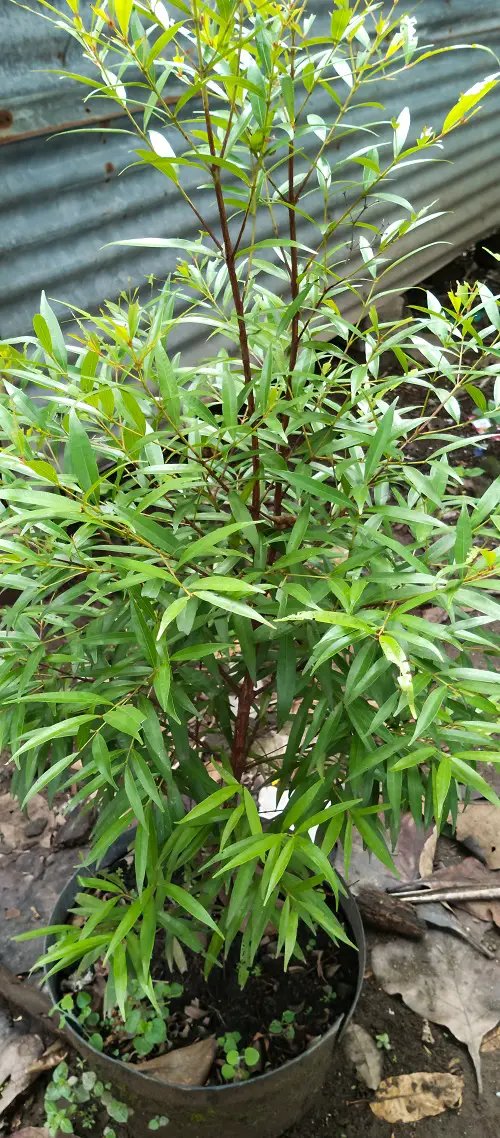
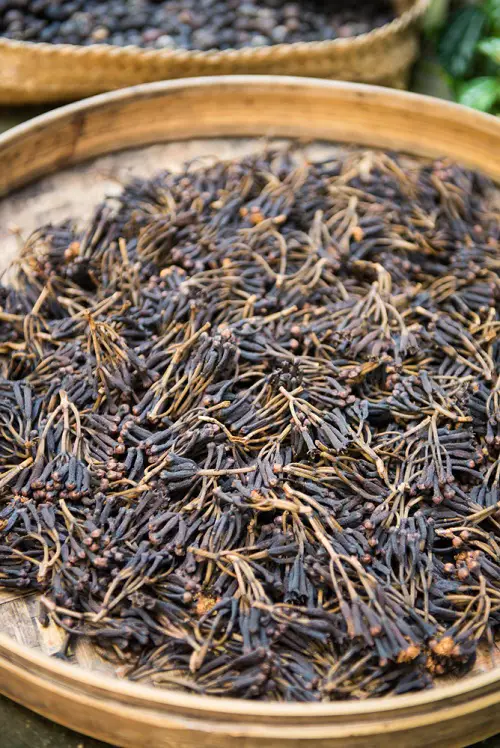
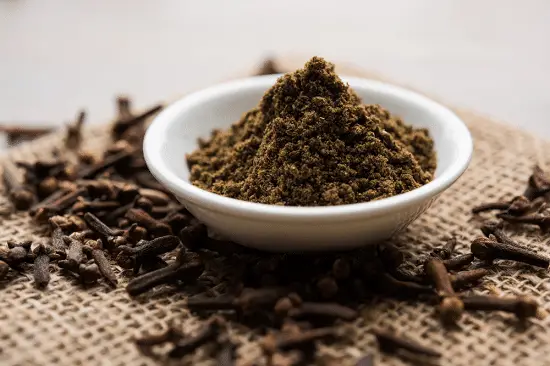

Hi – where and how can I buy seeds? I live in the Philippines, where this species is supposedly native, but even the main agricultural university has no idea where any, if any, grow in the Philippines. Their field trips have never encountered any, either wild or in a garden.
Cloves are grown commercially in Indonesia
PLS I LEAVE IN GHANA WHERE CAN I GET CLOVE SEED
Many cloves are grown in Tanzania
Hi kwame i hope that by now you get it. I will like to plant some please my email is kassfari (at) gmail.com if possible
Thanks
U can get from india, both seeds and young plants.
According to wikipedia, cloves are commercially harvested primarily in Bangladesh, Indonesia, India, Madagascar, Pakistan, Sri Lanka, and Tanzania (Zanzibar).
I want to buy seeds or cutting I want in Gujarat
Like many other spices it’s grown in Malbar region of India ( Western Ghat mountain area). Search nursery or try Amazon India which may can help you to get Rhizomes. Although hot and humidty is key factor for successful flowering and fruits otherwise you will get nice plant and no flowers. Gujarat winter is very dry and not sure it would have any effect on plant. It may work if you are in south Gujarat coastal area where heat and humidity is more than other parts of Gujarat.
hi there my name id Denise I live in Tropical Australia where can I buy clove seeds or established small clove trees
Dear friends
I am Althaf from Sri Lanka. we have cloves seeds please send email to althaf7520@gmail.com
Althaf